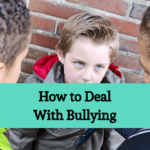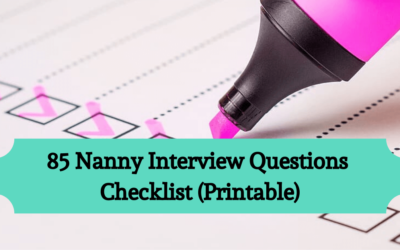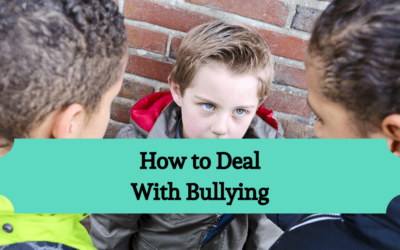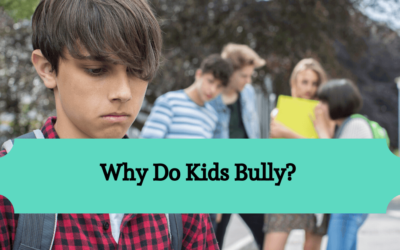As a victim of cyberbullying, it can feel like the world is attacking you no matter where you turn, as online harassment is a real problem. On average, 35% of kids have received online threats, and one in 5 has dealt with an abuser more than once. With a cyberbully, the situation can render a child powerless.
Table of Content:
This article is part of The Anti Bullying Guide article series
Chapter 1: How to Identify a Bully: The Ultimate Guide
Chapter 2: Bullying Facts: Guide for Parents and Educators
Chapter 3: Examples of Bullying
Chapter 4: Why do Kids Bully?
Chapter 5: How To Deal with Bullying
Chapter 6: How To Stop Bullying
Chapter 7: Effects of Bullying and Cyber Bullying (You are here)
Chapter 8: Stop Bullying Websites: Online Resource List
Finding Out
Well, over half of parents do not realize that their child is facing a cyberbully. You may not recognize that your child is being harassed through DMs, text messages, or in a chatroom daily.
Ask the tough questions as your child could be facing several issues like having their accounts hacked, having nude photos of themselves circulating among their peers, or other mentally harmful actions happening.
Parenting In the Digital Age
Don’t panic if you discover that your child is facing a bully. Parenting in the digital age is tough, and it’s easy to overreact. Instead, speak calmly to your child to learn all the details and consider a family therapist. Being candid with yourself and admitting that there is something wrong with your child and your family is the first step.
Cyberbullying can affect the dynamic of your home, and the first step is to focus on building your child’s self-esteem and changing them from a victim to an advocate. The shift can start with you, as the parent, being there to help navigate this difficult time.
Cyberbullying is Different
The American Academy of Pediatrics recognizes cyberbullying as “the most common online risk for all teens,” with the number of children and teens affected by cyberbullying is increasing.
Experts acknowledge that this method of bullying does differ from what some would consider the “traditional” schoolyard bullying portrayed on television or in movies. It is easy for others to be hurtful when they can hide behind anonymity.
It Is Not a Rite of Passage
When someone uses cyberbullying, they are systematically abusing their victims either through physical harm or aggressive behavior. Too often, parents, teachers, coaches, and the community might ignore the signs of bullying and consider the experience a ‘rite of passage.’
Common Effects of Cyberbullying
When faced with an issue of cyberbullying, your child may feel or exhibit a few of the feelings or signs when dealing with their bullying experience.
- Vulnerability – Bullying can crush any feeling of security as the child no longer has a safe place to escape from harassment at school or other activities. Even though the bully is not physically in your home, they are invading your space through your child’s phone or a computer.
- Obsessed With Their Image – If your child is increasingly worried about their social media presence, the number of likes or views on their stories, you may have a cyberbully.
- Unneeded Stress – It can feel at times that the entire world knows what’s going on, and your daughter or son can feel overwhelmed when dealing with a cyberbully. Depending on the severity of the cyberbullying, the mental anguish may be too much to handle.
- Grades Drop – If your child appears to be happy, but you see that their grades are dropping, this is a red flag that your child may be experiencing cyberbullying. Their attention is not focused on what is going on within their classroom. Instead, they are concentrated on their phones or computer and suffering the consequences on their report cards.
- Additional Warning Signs – Your child may experience one or all of the following feelings when dealing with a bully. Start asking questions if you see your son or daughter exhibiting any of the following signs:
- Angier than normal
- Isolation from family and friends
- Depression or talking about depression
- Illness or faking an illness to avoid activities
- Humiliation or shame
Think Before You Type
Bullies can cause some harmful results as cyberbullies fail to remember that there is a real person on the other side of the screen. Without the face to face interaction, people can leave harsh comments as there is not that natural filter when these words are said out loud.
The bully no longer has to depend on their size to control their peers and, instead, uses cruel and hurtful words to harm their victims.
Fake Accounts
The attacks that occur in chat rooms or other social media platforms are posted from fake accounts. While it seems that the world is teaming up against your child, the harmful messages are possible coming only from one or two people.
Girls vs. Boys
If you have a daughter, she has a higher chance of being cyberbullied than a son. This type of manipulative behavior is a popular tactic among girls than it is boys.
Suicide
The worst outcome of cyberbullying is a loss of life. An estimated 14% of teens have considered suicide, with 7% of them trying it. As their self-esteem drops, your child may feel constant feelings of hopelessness.
Change the Narrative
There are a few steps you and your family can take to help your child overcome their bully. As hard as it sounds, starting the conversation is vital and takes the time to listen to every word. Together, create a plan on how to combat their bully and utilize resources such as websites or professional help if you need them.
Your child can block or unfriend their bully and record any interaction as proof if the bullying escalates to the point that you need to include the authorities. Switch the power back to your child by giving them the self-confidence to say `no” to their aggressor.
Final Thoughts
Technology today opens the door for behavior by teens and children that generations before have never experienced. Hiding behind a device causes the endless cycle that hurts the victim, their families, and their community. Studies indicate that 21% of children have received a threatening text or email interaction.
While the method of bullying might be different – the results are the same with the effects of the hurtful words are a burden carried for a lifetime.
Table of Content:
This article is part of The Anti Bullying Guide article series
Chapter 1: How to Identify a Bully: The Ultimate Guide
Chapter 2: Bullying Facts: Guide for Parents and Educators
Chapter 3: Examples of Bullying
Chapter 4: Why do Kids Bully?
Chapter 5: How To Deal with Bullying
Chapter 6: How To Stop Bullying
Chapter 7: Effects of Bullying and Cyber Bullying (You are here)
Chapter 8: Stop Bullying Websites: Online Resource List











0 Comments